Our day trip from Jerusalem to the Dead Sea with stops at the UNESCO World Heritage site of Masada and the En Gedi National Park was simply brilliant! The bus took us from the busy city of Jerusalem through the tunnel under the Mount of Olives and suddenly into the Judean desert. We dropped quickly in altitude down to 423m below sea level at the Dead Sea. But before floating in the famous salty waters we had some exploring to do.
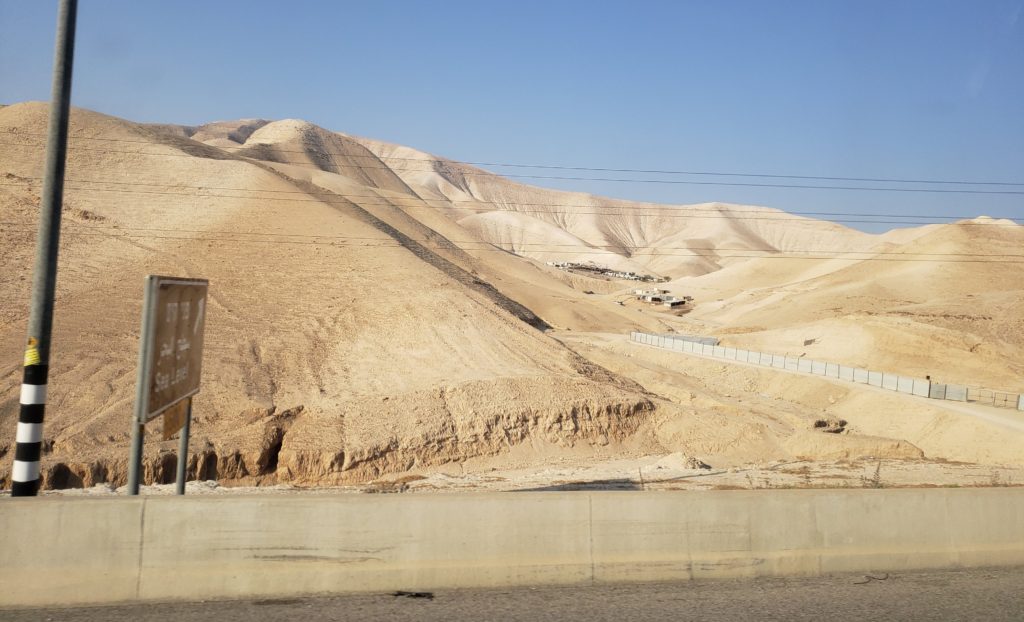
We headed south to Masada first to see Herod’s refuge and winter palace, made famous as the place of mass suicide by Jewish freedom fighters in the first century. Following the Dead Sea on our left, we enjoyed views of the desert, cliffs and the occasional date farm on our right.
The guide pointed out the Qumran Caves where the Dead Sea Scrolls were found which was pretty cool – I remember learning about these scrolls during my theology degree at Otago many moons ago. The following week we visited the specially housed scrolls in the Shrine of the Book, part of the Israel Museum complex in Jerusalem.
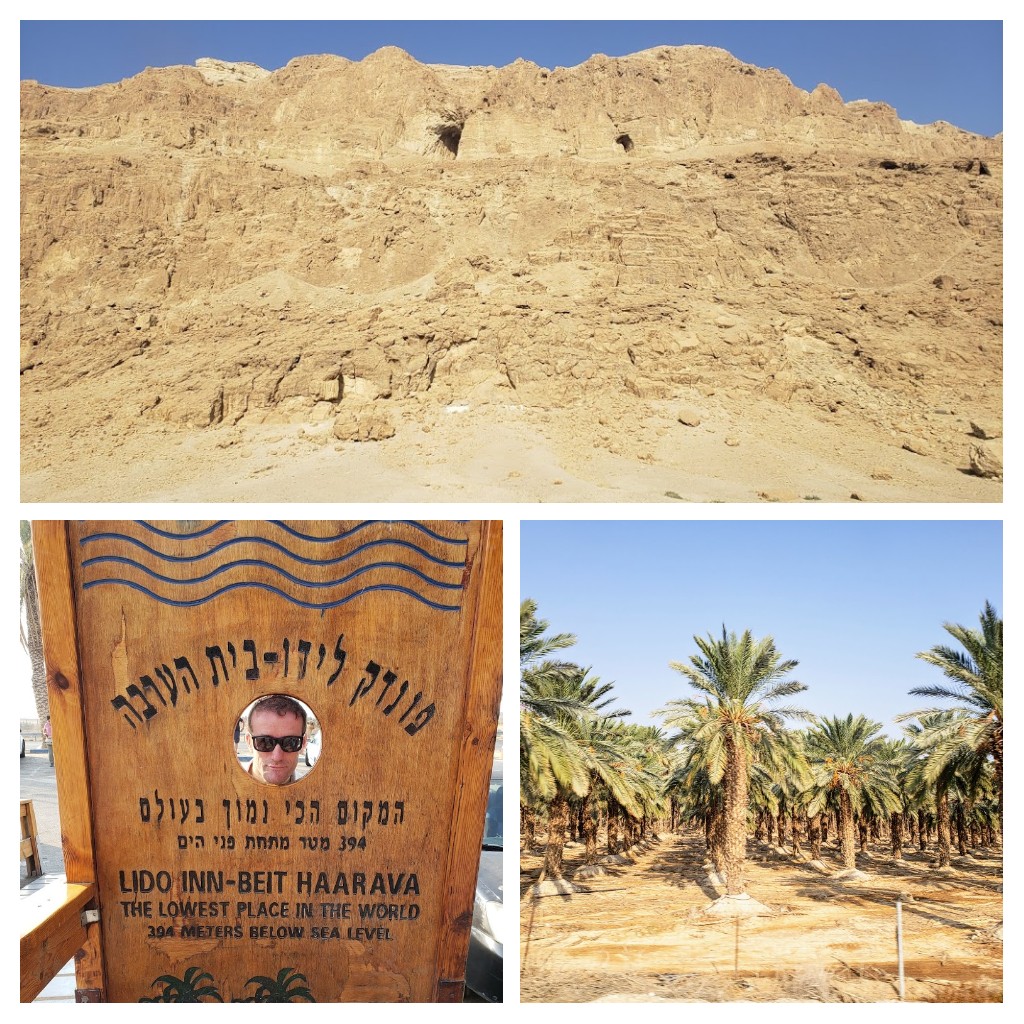
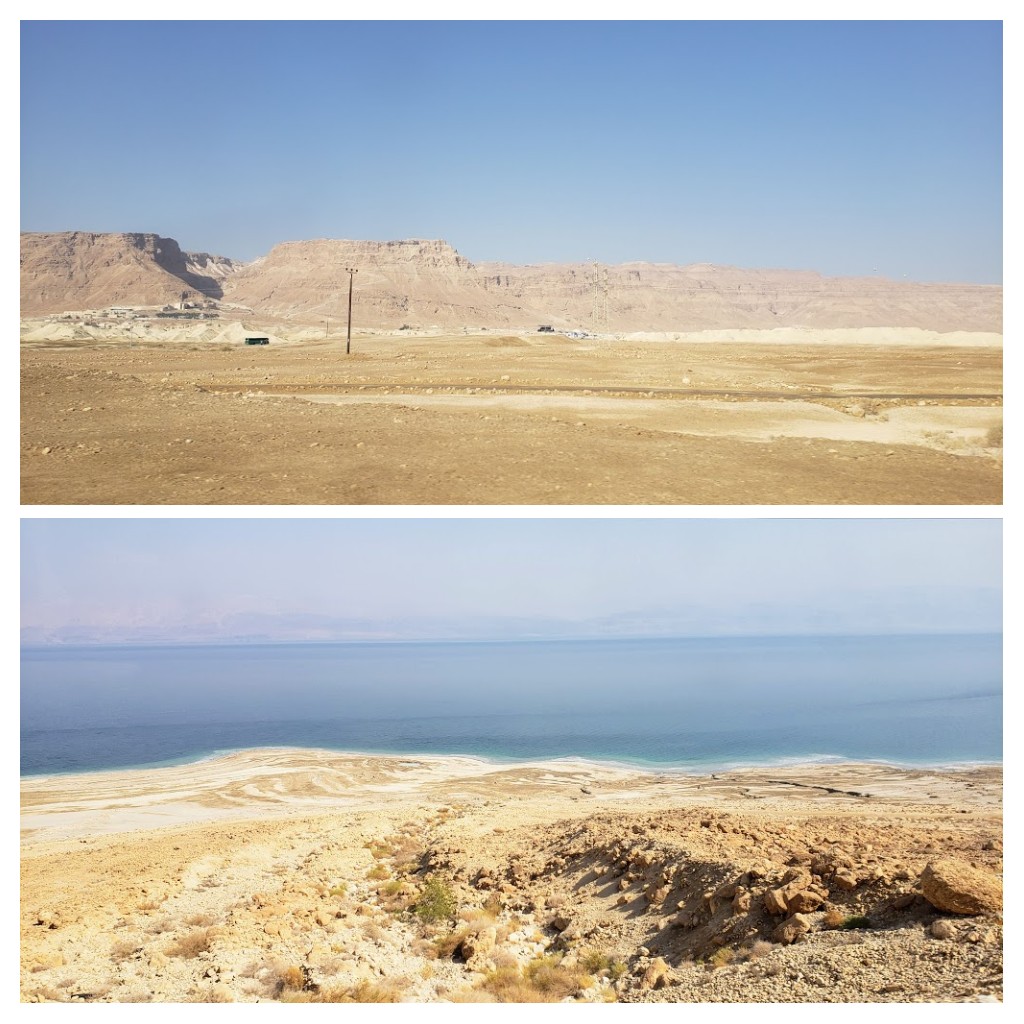
Many tourists head to Masada for the sunrise but that meant a 2am start from Jerusalem and a good hour of hard slog up the hill in darkness. It also meant no guided tour of the site. We opted for the more respectable departure time and the guided tour at the top. The walking route by the time we arrived (10.30ish) was closed, presumably because of the heat. Our group all took the 3 minute cable car up the mountain- a much better option in my book but Antony was looking longingly at the Snake Path zigzaging up.
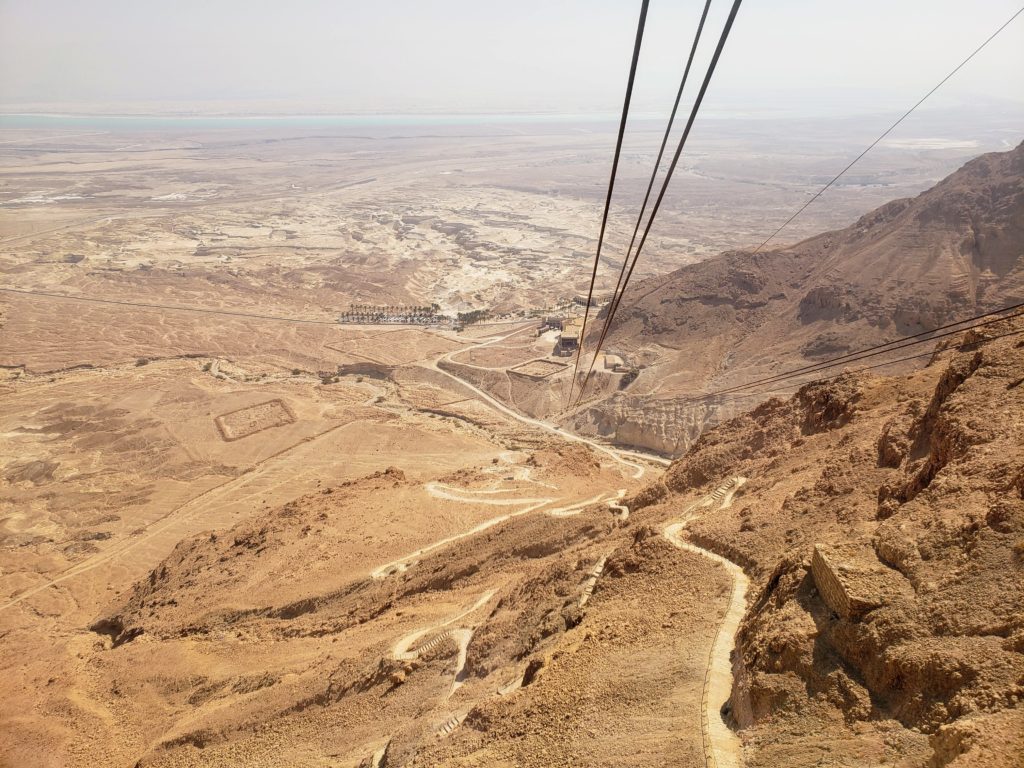
Our guide Avit explained the fascinating history and context of Masada and showed us to points of interest around this fortress site on top of a hill. It was hot up there but absolutely stunning. The views over the desert and to the Dead Sea were just breathtaking and the ruins and the story of the place fascinating.
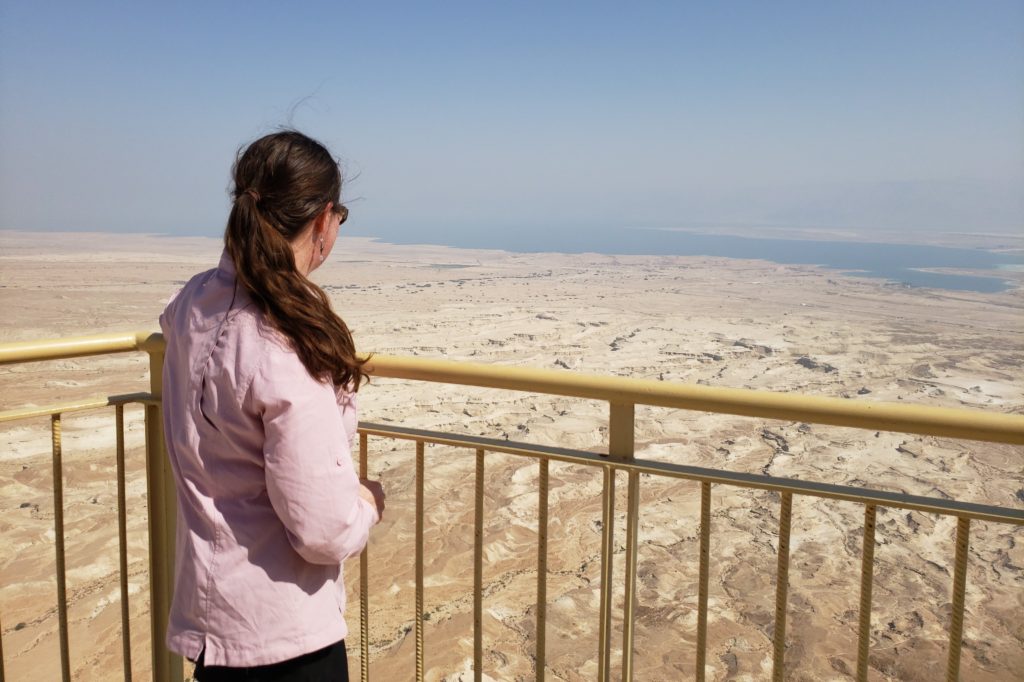
Masada is a plateau separated from the mountain chain/ cliffs nearby – making it an ideal place of refuge. Herod during his reign (37 BCE- 4BCE) chose it as a winter palace and refuge against his enemies. He had luxurious palaces, cisterns, stockrooms and despite being in the middle of the desert a bath-house complex built here!

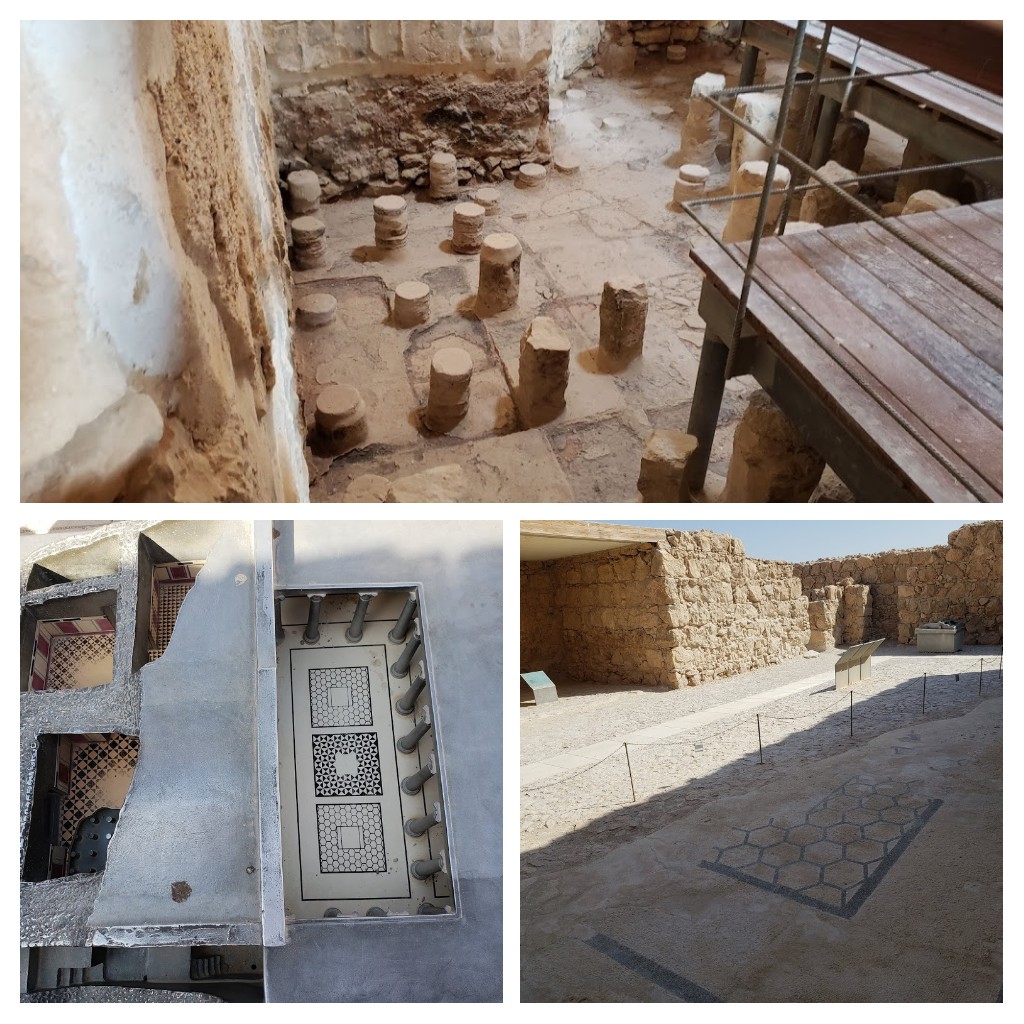
After Herod’s death and the annexation of Judea to the Roman Empire in 6 CE, the Romans stationed a garrison at Masada. Fast forward 60 years and the Great Revolt of the Jews against the Romans began with the conquest of Masada. After the destruction of Jerusalem in 70 CE more rebels joined those at the fortress of Masada. They lived in rooms in the wall and in some of Herod’s palaces. They constructed a synagogue and Jewish ritual baths. There lived a community of just under 1000 people here.
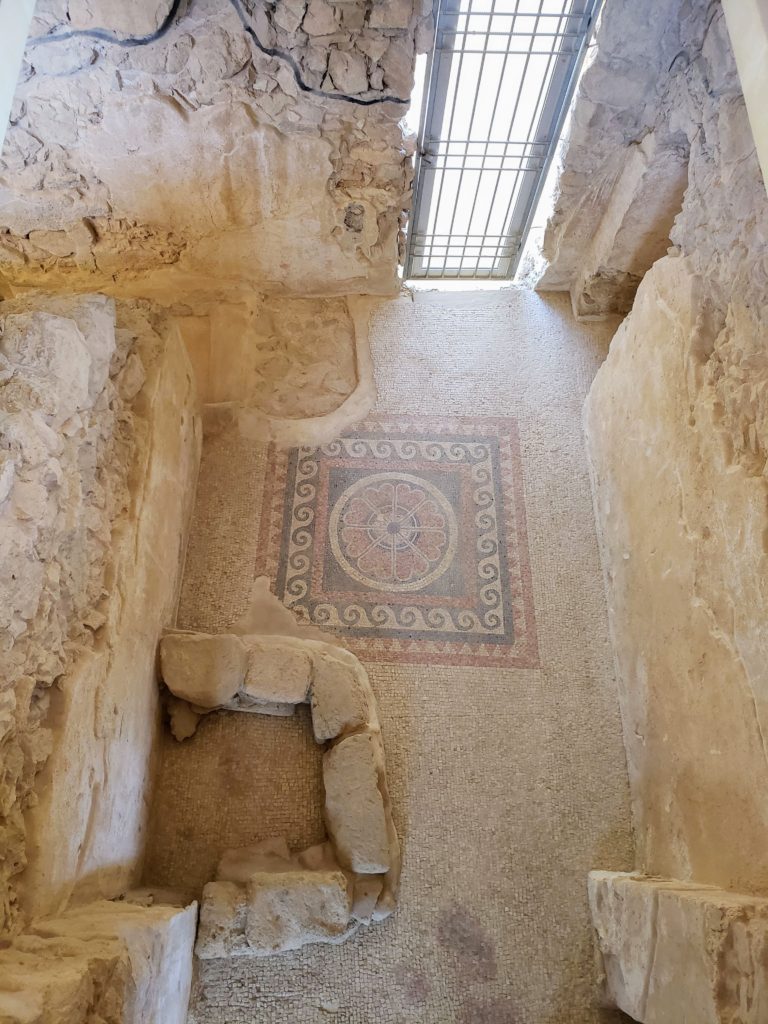
The Romans weren’t happy about this and amassed 8000 troops, building eight camps around the base of the mountain – which we could see evidence of from the top. Further to the three camps you could see in the pic from the cable car above this one of Antony shows remains of a large Roman camp on the West side of Masada. It was from near this one, on a natural slope that they built a ramp made of earth and wooden supports to try and reach Masada.
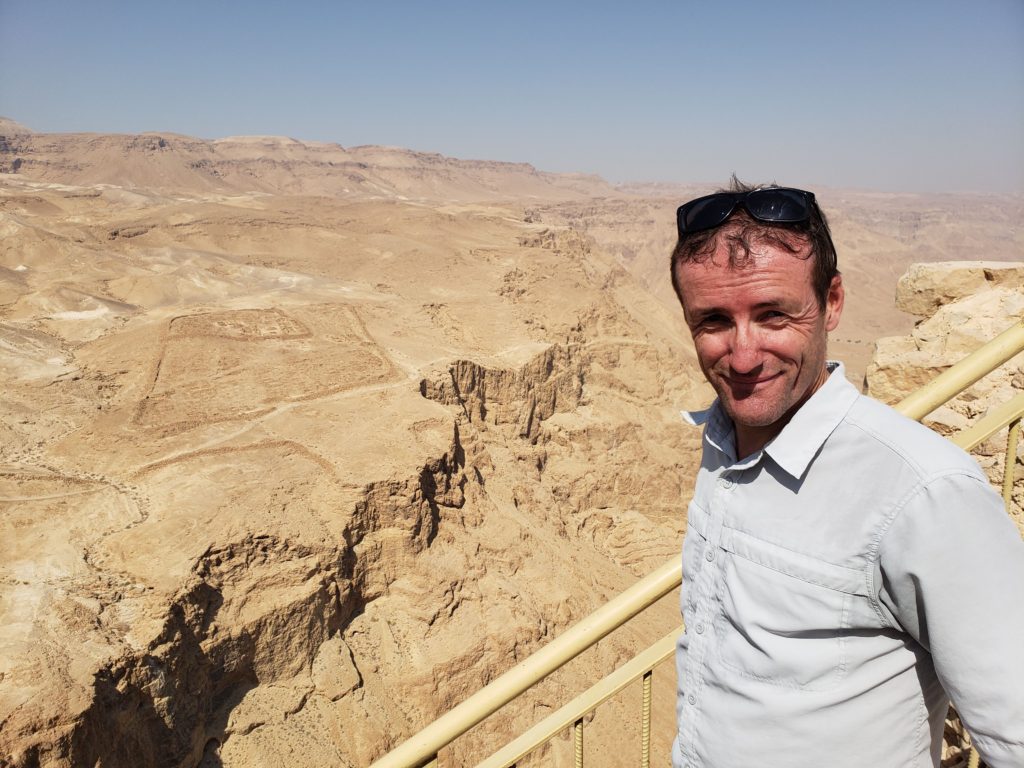
Captive Jews brought food and water to the Roman troops- likely from Ein Gedi some 21 km away. They besieged Masada for several months, eventually bringing a tower with a battering ram up the ramp they had built with which they began to batter the wall. The rebels responded by building an inner support wall out of wood and earth, which the Romans then set on fire.

When it became clear to those inside the walls that they couldn’t hold off the Roman attack any more, they opted to take their own lives. Rather than live in humiliation and shame as Roman slaves, the rebels chose by lot 10 among them to kill with the sword all 960 members of the community (men, women and children), then each other, then the last one to kill himself. Pretty staggering to imagine.
When the Romans advanced and saw no enemies, all was silent. 1st century historian Josephus Flavius gives the account of what happened in his ‘The Wars of the Jews.’ His information was thanks to two women and five children of the community who had been hiding in the cisterns and then recounted the story to the Romans. Josephus writes of the Roman soldiers ‘…they were at a loss to conjecture what had happened here encountering the mass of slain, instead of exulting as over enemies, they admired the nobility of their resolve and the contempt of death display by so many in carrying it, unwavering, into execution.’ Pretty crazy history eh?!
Crazy even how anyone managed to live up here in the middle of the desert on an isolated mountain with only four days of rain per year. Our guide explained how Herod created channels to divert floodwater from the nearby ridge (which got more rain and snow) to bring the water close. It could then be stored in 12 cisterns hewn on two levels into the rocky slope and taken up the mountain with pack animals to be stored in the cisterns on the mountaintop. The plastered cisterns could hold 40,000 cubic metres of water!
I’m not sure what people managed to grow or eat living up here in such dry conditions but apparently doves and dates were on the menu. I’m in one of the three dovecots in Masada in the picture below – the little compartments in the wall are housing for doves. This was on the ground floor with a watchtower on the upper storey. Apparently they ate the doves and may have used their poop for fertiliser for crops. They also ate dates. Amazingly ancient seed was discovered in a clay jar here and scientists have tried growing it. One 2000 year old date pit actually grew into a date palm! Read more on that here.
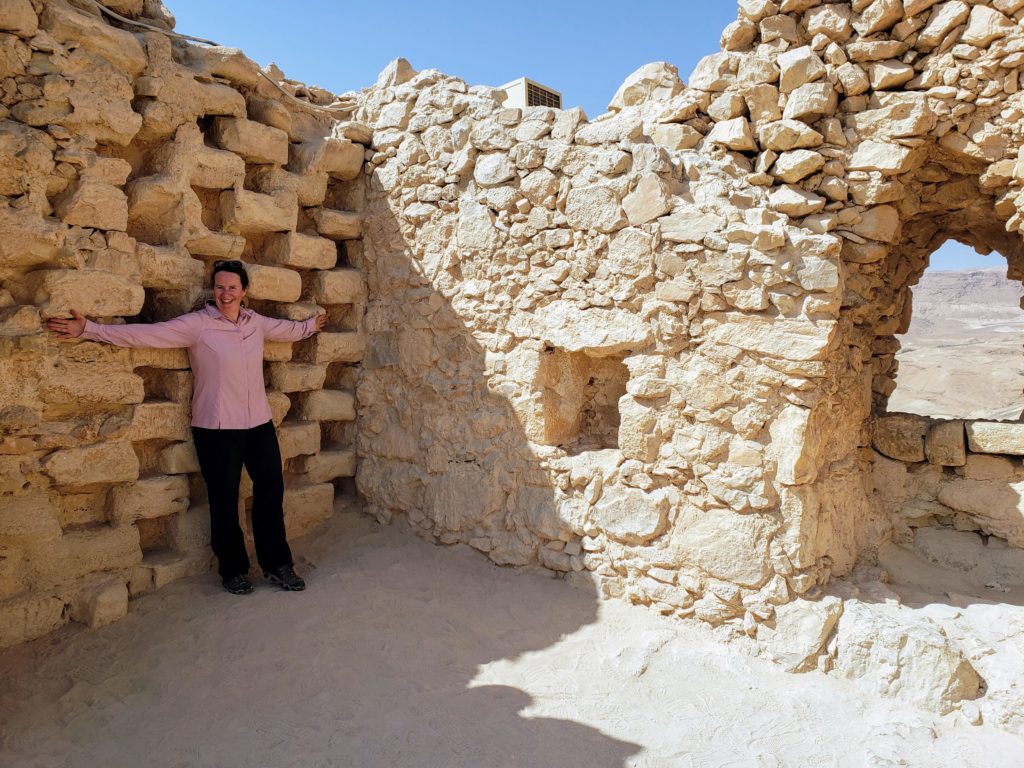
After the Romans left Masada at the start of the second century, the fortress remained uninhabited for a few centuries. During the 5th century, in the Byzantine period, a monastery was founded here for hermits. It seems after the rise of Islam in the 7th century the monastery ceased to exist.
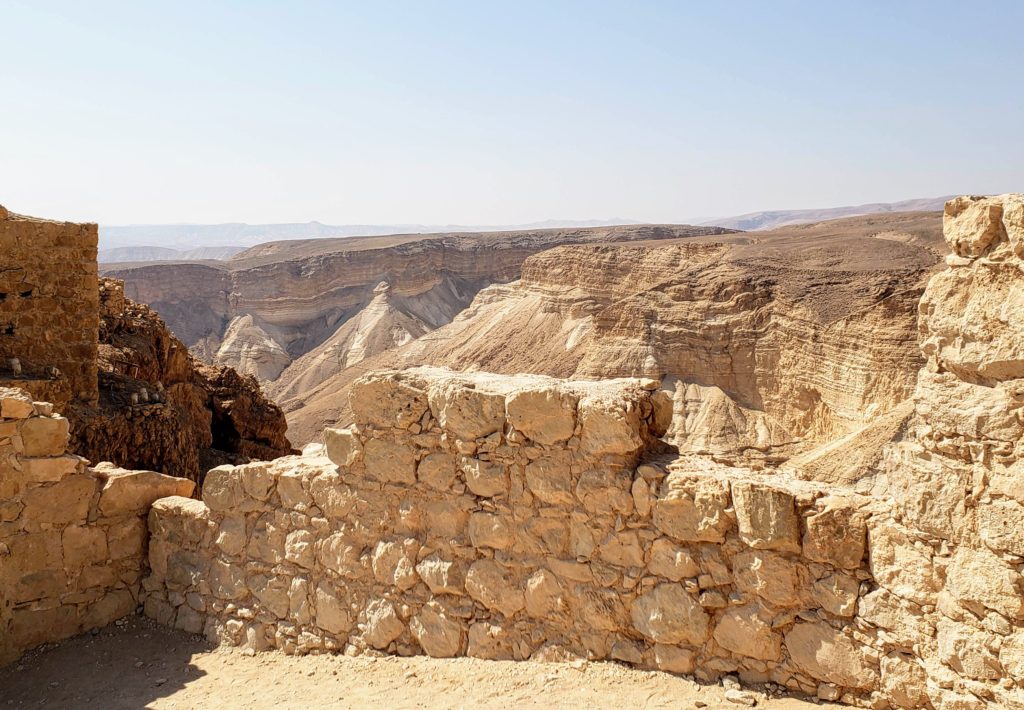
After our guide had finished showing us the highlights he left us with about 30 minutes free before we had to meet down at the bus. Most went to the restaurant for lunch but we had packed rice salad which was keeping cool on the bus… so we used the extra time to head to the Northern Palace, dropping down to the middle and lower terrace which it seems most people leave off their tours as it was very quiet. Amazingly well preserved columns and frescoes in the lower terrace, which was in Herod’s day a reception and banquet hall.
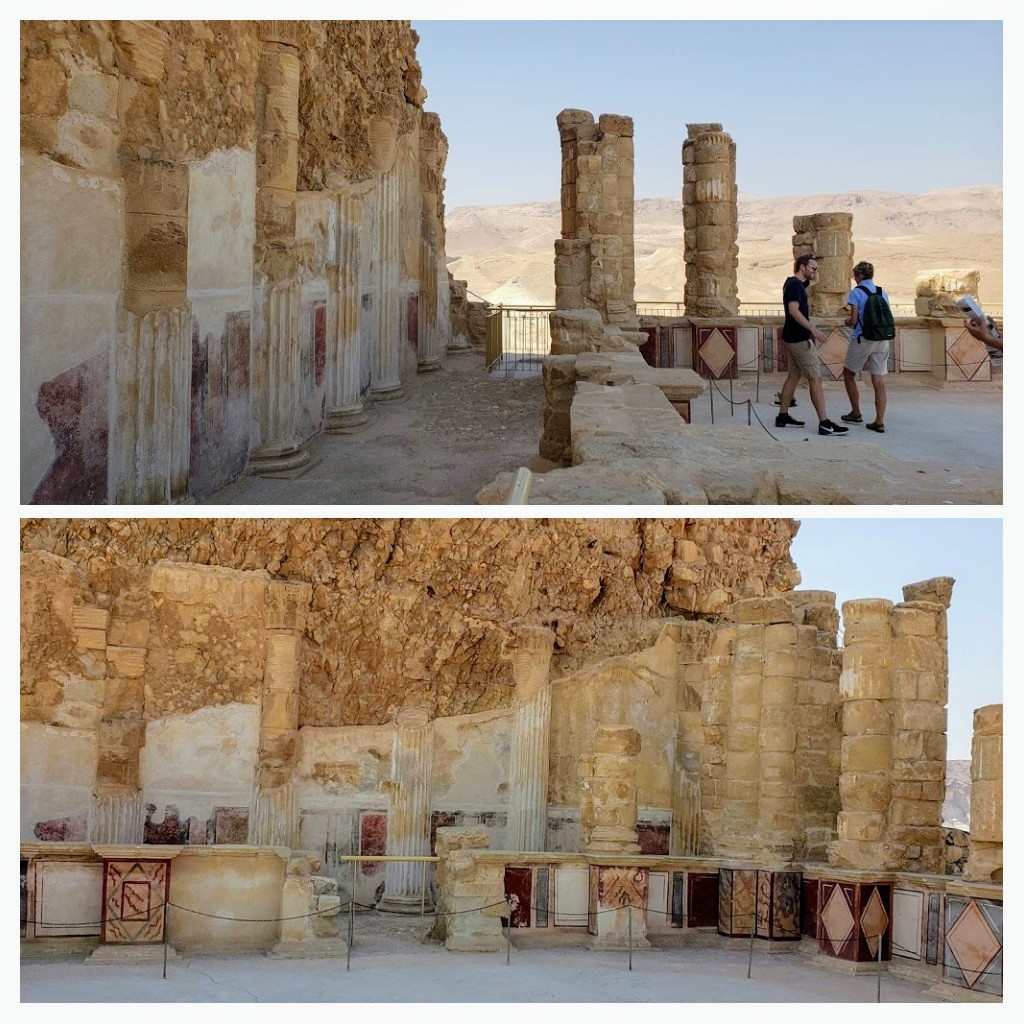
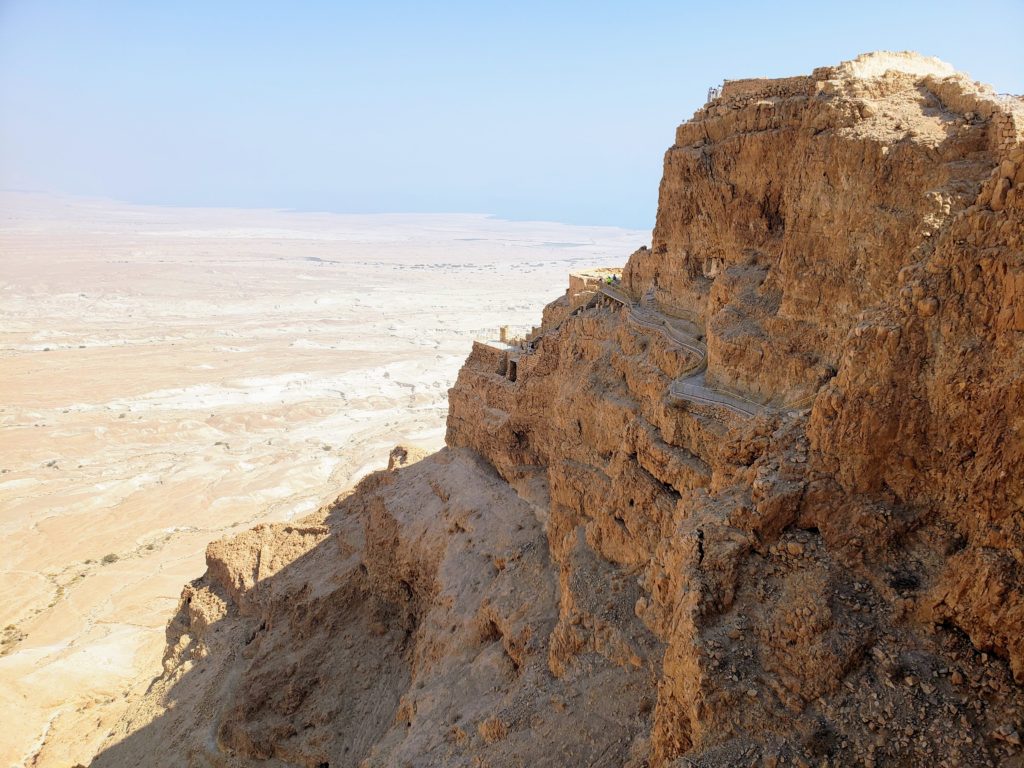
Next it was a quick eat of our lunch on the bus during the short trip from Masada to En Gedi Nature Reserve. We had about an hour and a half here and our guide took those of us who were keen on a little hike up the Wadi David valley to a few waterfalls. This was only a very small section of a much bigger area but enough for me given the heat and the walking we’d already been doing.
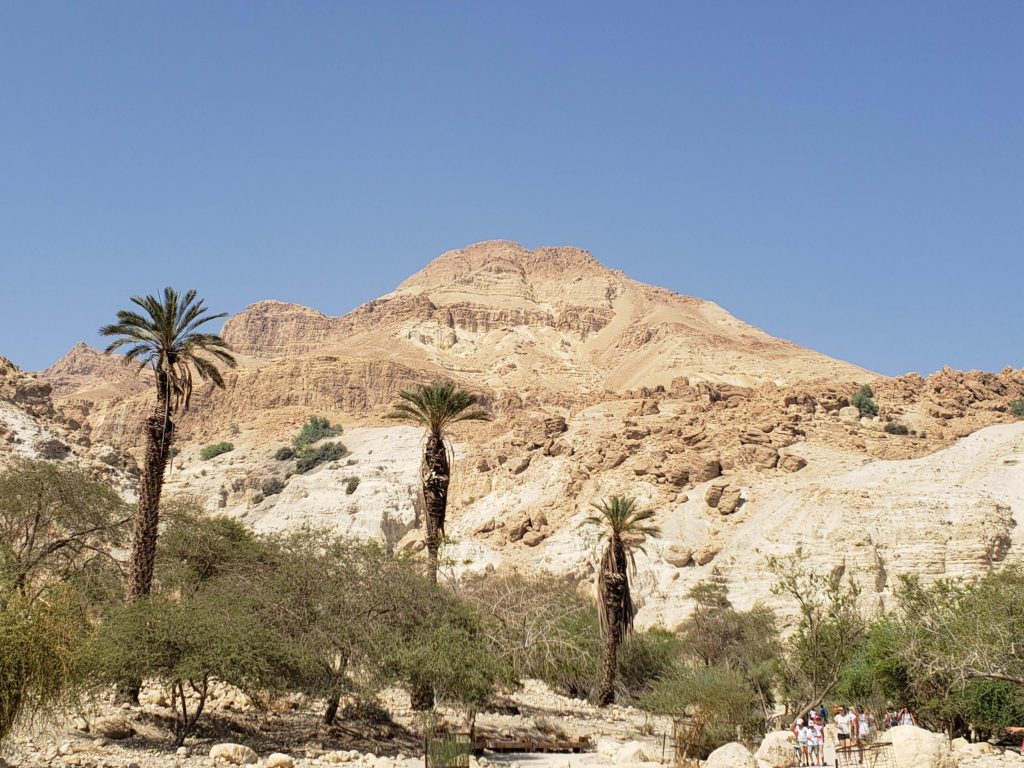
It was a Jewish holiday when we visited so there were lots of Israeli families out enjoying this oasis in the desert. The lushness due to the park’s four fresh water springs.
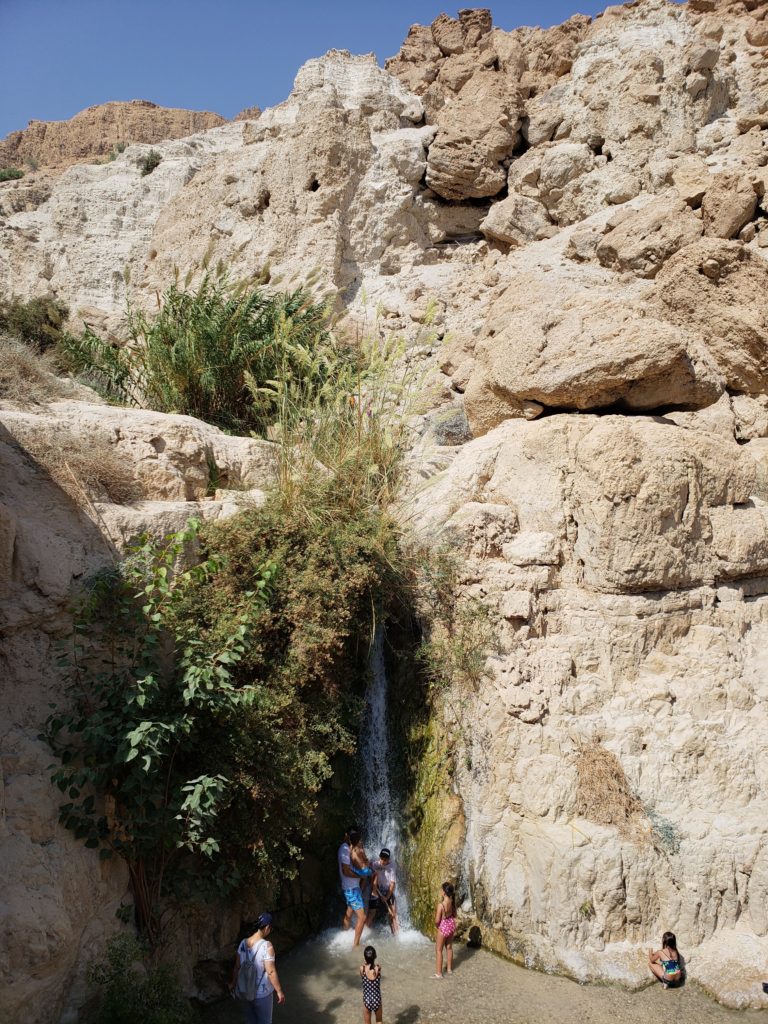
En Gedi is on the eastern edge of the Judean desert and contains vast differences in elevations over a relatively short distance, hence the many cliffs. Our guide led us up the valley with the little stream of water on our left for most of the way and cliffs on our right.
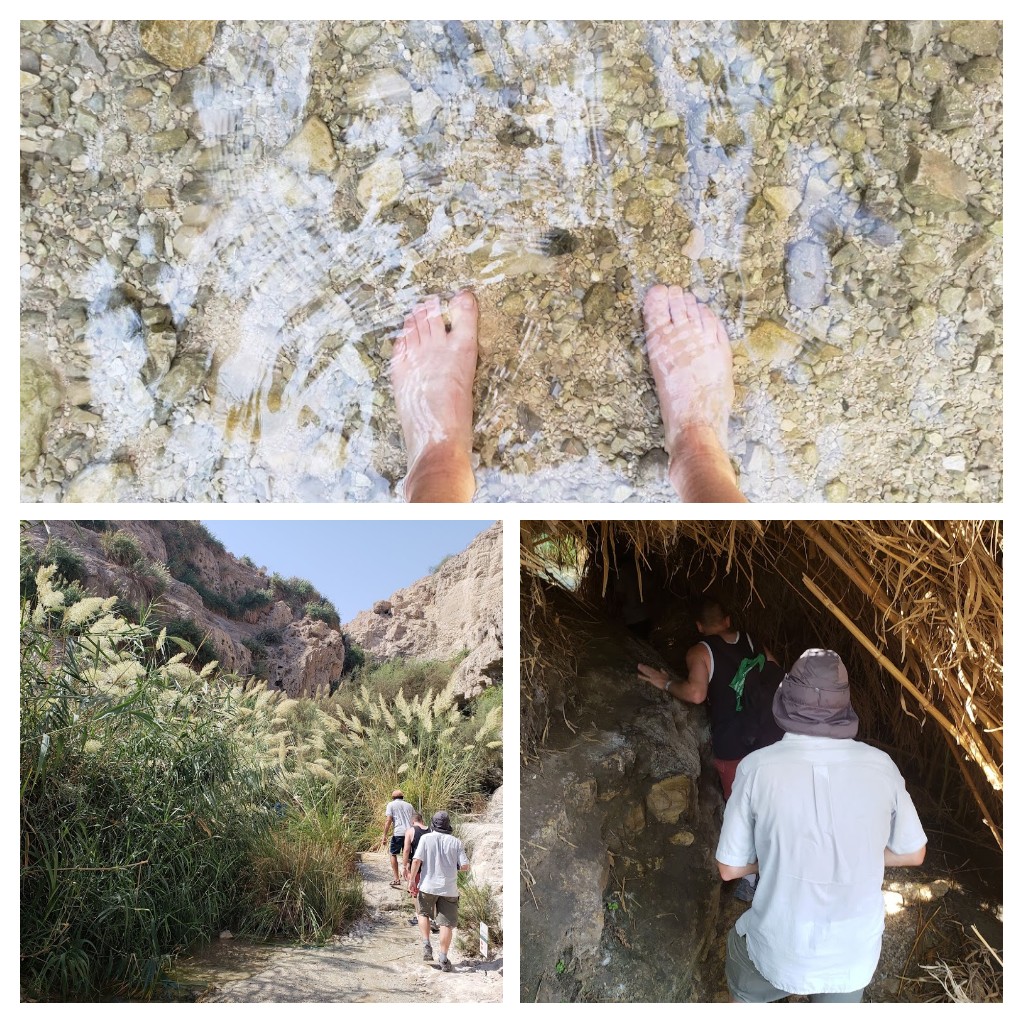
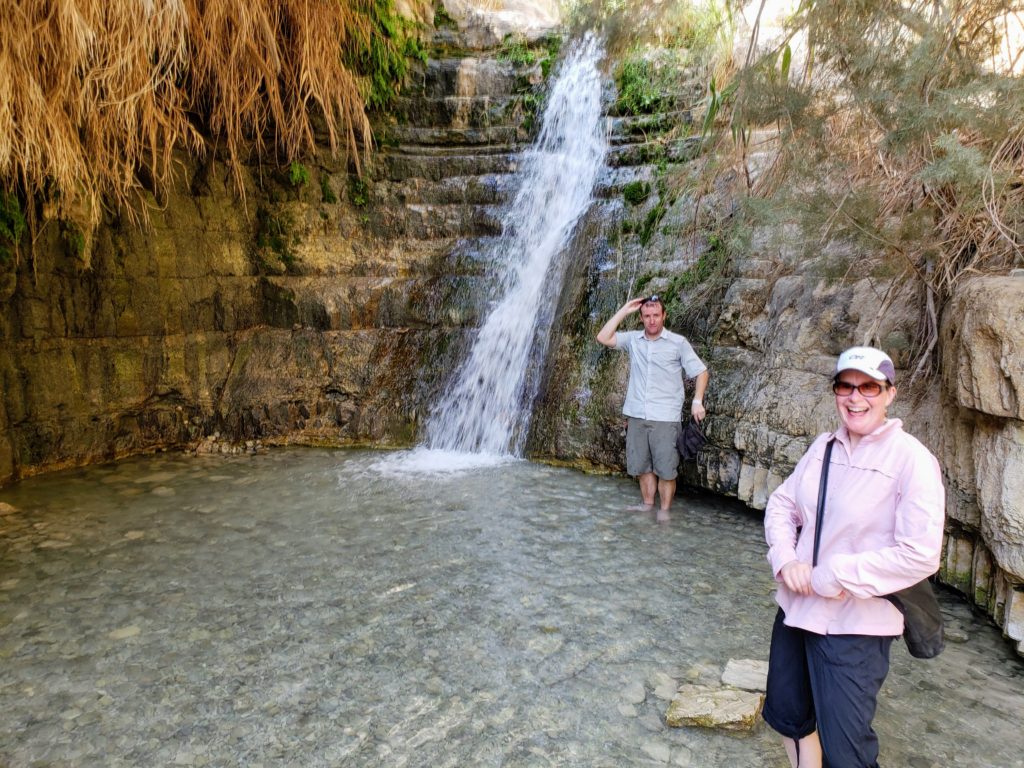
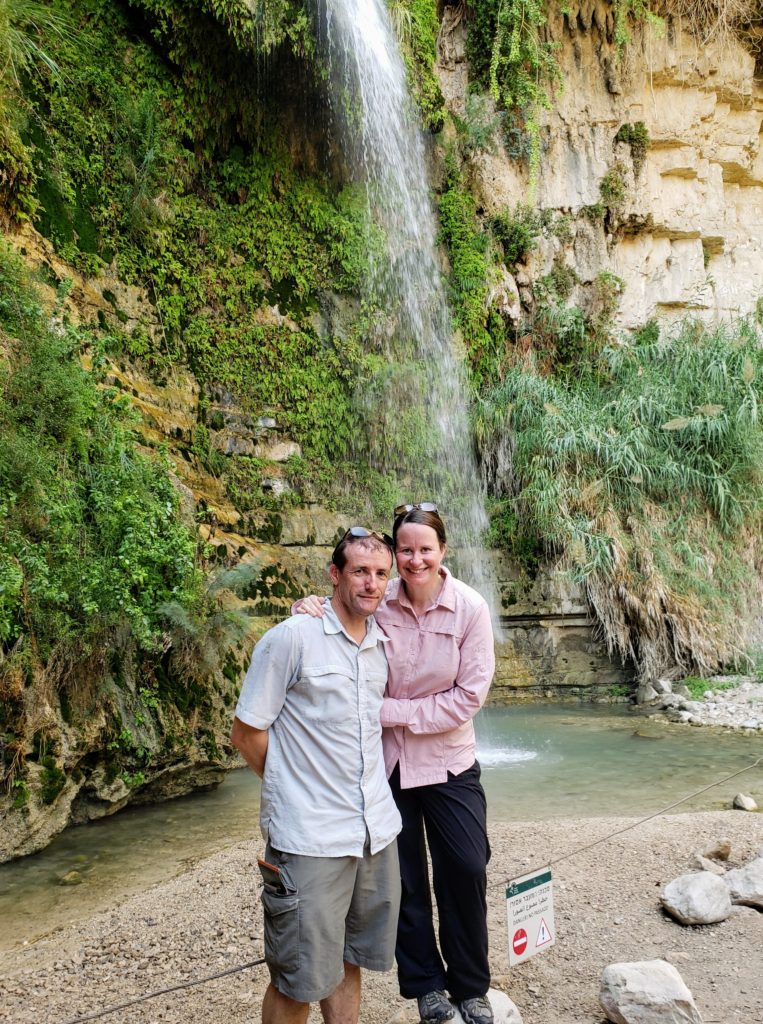

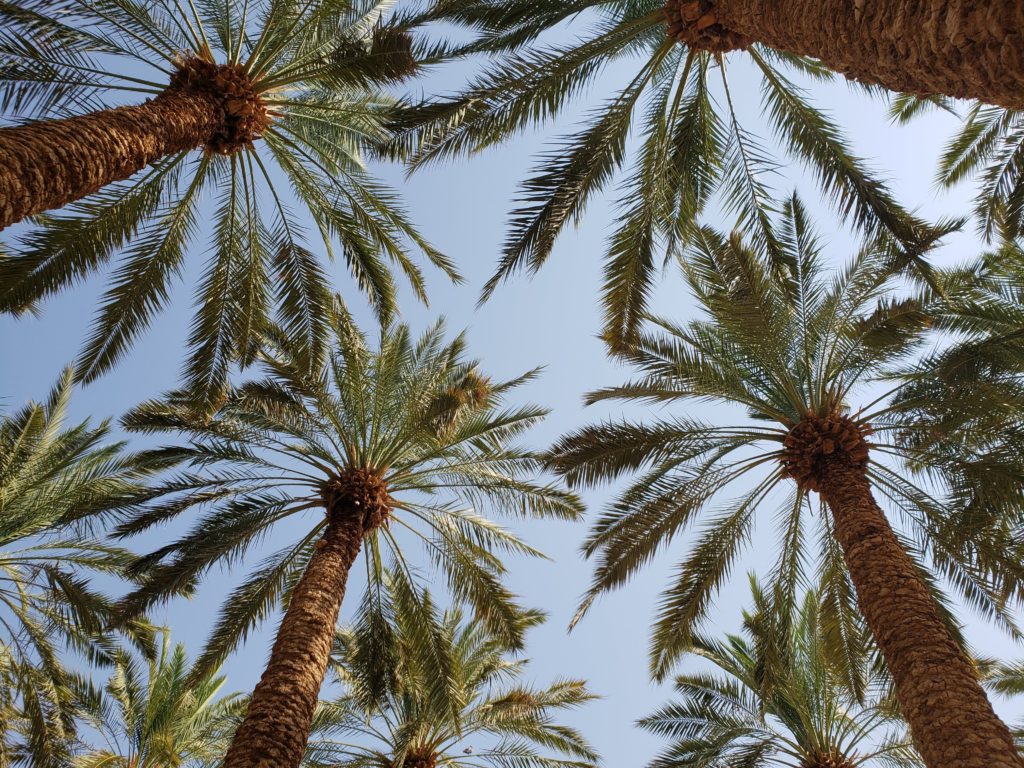
After spotting a few Ibex near the carpark area we were off on the bus to our last destination – the Dead Sea. We got changed and headed down to the hot and busy Kalia beach. Antony headed in first then I followed later. He really enjoyed the floating feeling… for me that aspect didn’t feel that much different to normal water as I usually float without trying anyway. But the sinking mud my legs fell into was cool – I smeared it all over my body and then rinsed it off … my skin felt so smooth, it was wonderful.
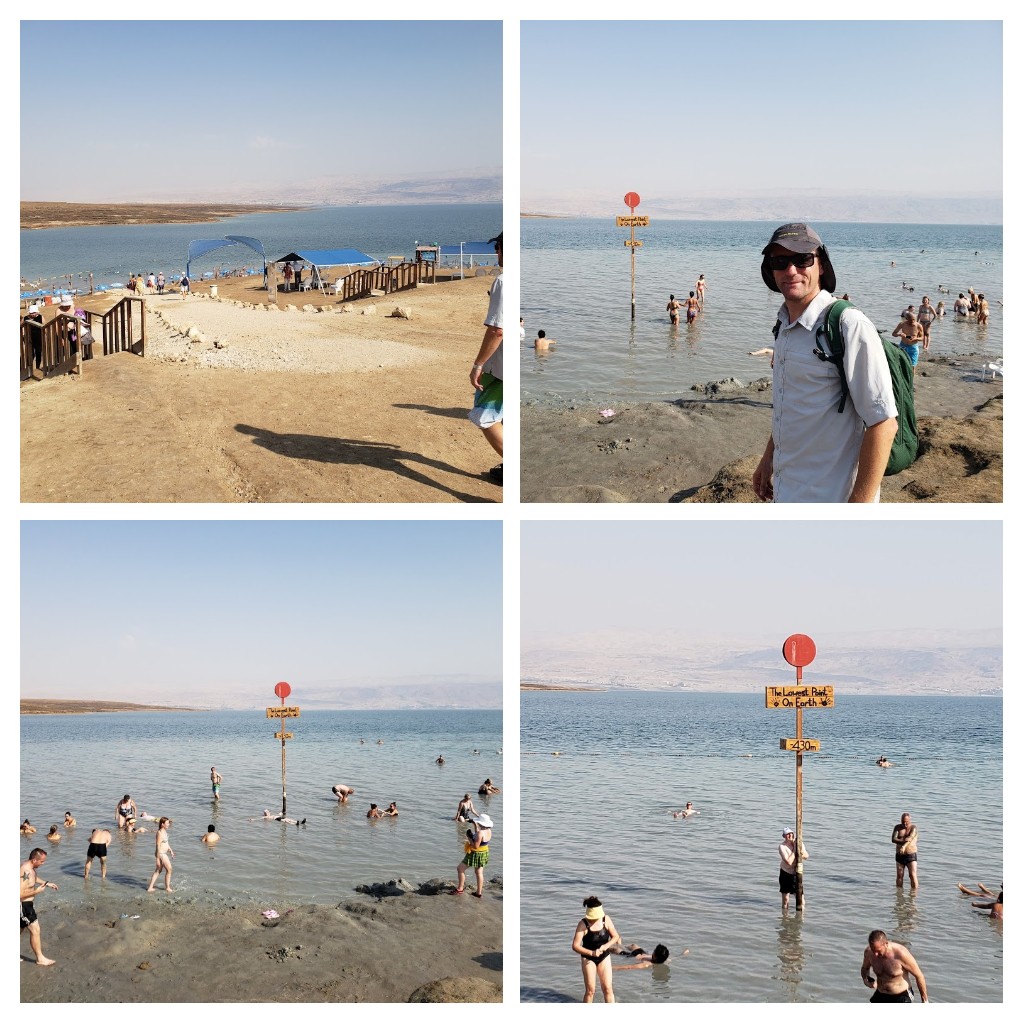
You have to be super careful not to get salt in your eyes as it can sting, or near your mouth as it’s not clean. They have signs everywhere showing you to float on your back and not your front to avoid this. Not everyone got that memo it seemed as I watched a guy from West Africa dive right under and then was almost blinded by the stinging after! Wiping his eyes with already salty hands didn’t help him of course the poor thing. And another fellow was fully swimming, head down doing freestyle! At least he was wearing goggles but I wondered how he coped with all the salt on his lips – I just got a splash there and it was so hard not to lick them. There was a tap on the beach with fresh water which you really needed to rinse off the salt when you got out – as it can sting a little (or a lot if you’ve just shaved or have any cuts).
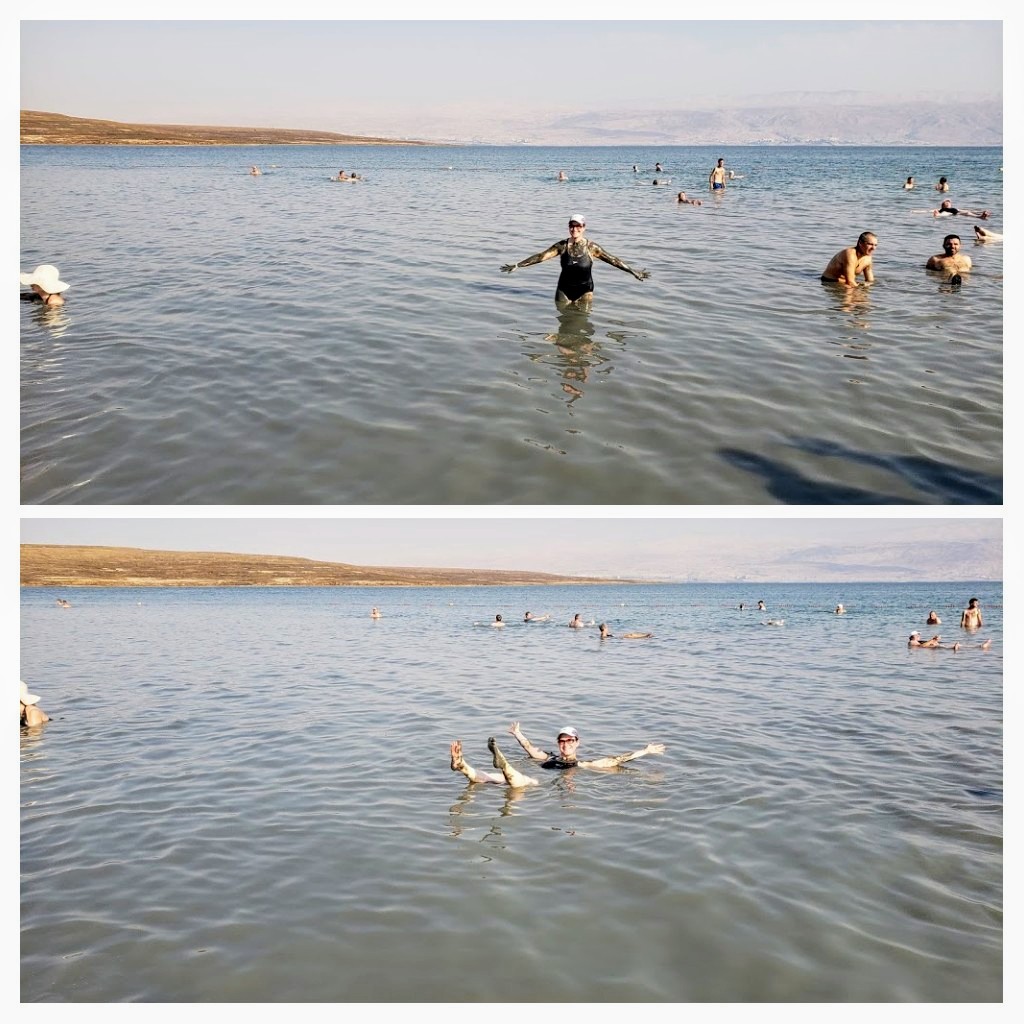
After our time was up on the beach we showered, changed and got on board the bus for the drive back to Jerusalem. Although we were tired from the big day it was dusk which is such a pleasant time to wander in the city and we were hungry. Given it was a Jewish holiday (first day of Sukkot starting) most restaurants were closed so we headed to our old favourite – the arab one by Damascus Gate which was open- Antony tried a chicken dish this time but enjoyed the rice that came with it more than the chicken! I had hummus with pita bread and salads.

After a wander through the Old City and seeing all the Jewish families in their finest at the Western Wall area, we headed home very satisfied. It was an absolutely fantastic day!